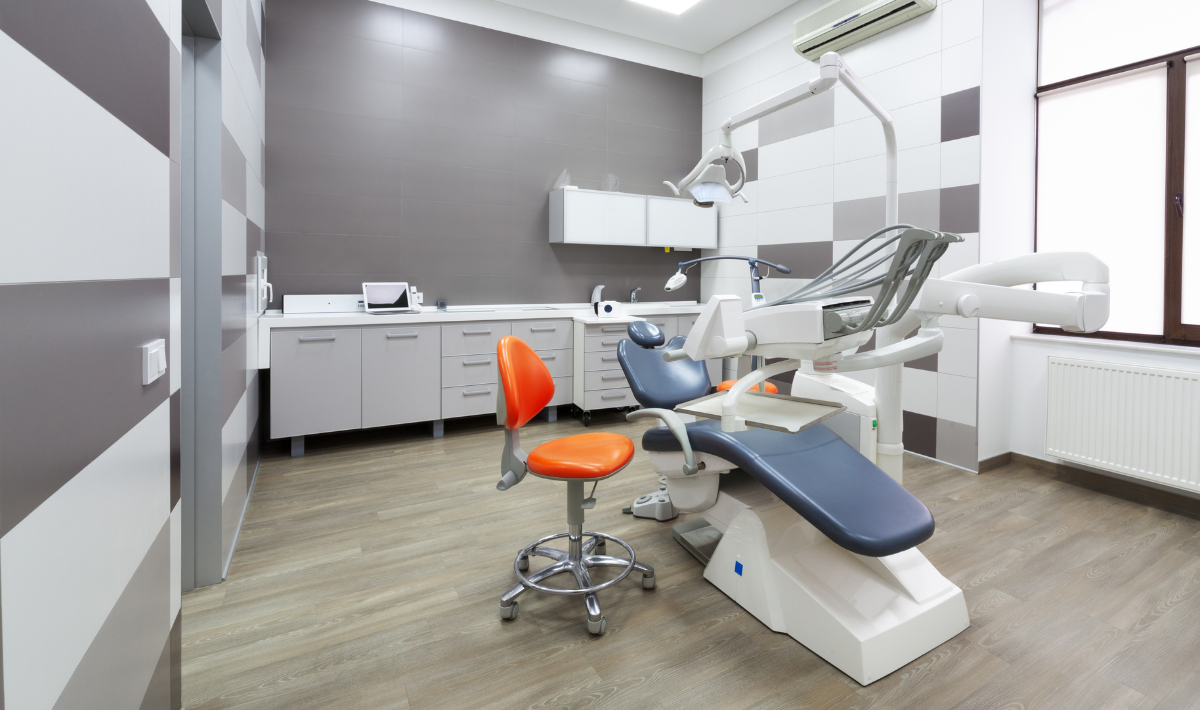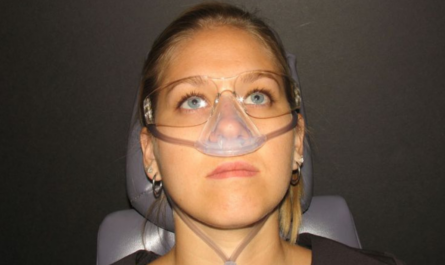For many dentists, the cost of overhauling one office – not to mention multiple offices in a group practice – can seem overwhelming. “They are afraid it will cost way too much, and that they won’t get enough return,” says Inga Paul, senior interior designer for Goetze Design Services. Paul has been with Goetze Dental 16 years.
Many dentists fear that the project will be long, drawn-out and expensive. “But you can do much of the back work and research before spending a lot of money,” she says. “It’s taking that first step that holds a lot of them back. It’s a tough decision. [They wonder], ‘What if I don’t like it when it’s finished?’”
Some dentists fail to see the need to undertake a project in the first place, she says. “They rarely come into their office through the front door. They don’t spend a lot of time in their reception area. But if they walk through that area and see that the carpet’s worn and the doors are a little beaten up, that’s a heads-up something needs to be done. And it helps if someone they trust says to them, ‘You know, it’s time for us to do a little work.’ And you don’t have to spend a ton of money to spruce things up – a coat of paint, new carpeting – those are all things you can do before a renovation.”
Planning for the future
Building and renovating an office is something most dentists do once or twice in their careers, notes Paul. “So we tell them, ‘Don’t shortchange yourself.’” Some try to acquire a small space to save on rent or leases. “But we tell them, ‘If you’re going to spend money to move into this space, you should love it and be happy to go to work there every day – and give yourself room to grow.’” As a rule, Paul encourages doctors to have one or two operatories into which they can expand should the practice grow. “If it’s a doctor who’s looking to sell his or her practice or have an associate come in, then we want to make sure they plan ahead for the next five years, so they don’t have to move [prior to their retirement].”
The HGTV effect
“People have always come to us with piles of pages, ‘I saw this lighting, this paint color, and I like it,’” says Paul. “But today, because of all the do-it-yourself activity, they give it more consideration. And they know it might not be as cost-prohibitive as they used to think.” What’s more, today’s dental teams are open to bold design ideas; they’re not tied to boxy, square plans.
Room by room
The lounge. “People are putting a little more thought and value into their employee lounge,” says Paul. Dentists want to give their staff a pleasant and comfortable place to sit, keep their belongings, have lunch and conduct team meetings. There’s a benefit for the dentist: When staff members feel comfortable eating lunch in the lounge, there’s a better chance operations will gear up promptly in the afternoon.
Bathrooms. They’re bigger than ever, partly because of the Americans with Disabilities Act.
Operatories. They continue to grow in size, though there are limits. Paul prefers operatories to measure between 10 to 10 and a half feet wide, to 11 and a half to 12 feet deep. They probably won’t get much bigger, because instruments and equipment must be within arm’s length of the dental team, she says.
Sterilization area. It’s not a showroom, but neither should the sterilization area be hidden from view. Making the sterilization area pronounced and plainly visible to patients instills confidence that the practice is taking the necessary steps to ensure patient safety. What’s more, making the sterilization room visible to all gives staff a reason to keep it clean and tidy.
Checkout. It’s best to separate this area from reception, says Paul, not merely because of HIPAA regulations, but because “when you’re talking about money, you don’t want everybody to hear that conversation.”
Storage. Bigger is better. And Paul prefers one large, centrally located storage area, rather than several smaller ones scattered throughout the office.
With the young doctor in mind
“Technology for young graduates is huge,” says Paul. Dentists coming out of school tend to be more apt than their older colleagues to specify digital technology, such as imaging equipment and automated dental management systems. They don’t want shelves of folders behind the front desk, and they have a difficult time coping with paper-and-pencil scheduling systems. As a result, the discussion about digital technology and the infrastructure to support it, such as conduit and ceiling mounts, should begin early in the redesign or renovation process.
The importance of pre-planning:
When Patrick Crowley, author of Dental Office Design: 1001 Practical Tips for Creating Your Ideal Dental Office, began designing dental offices more than 20 years ago, he created a two-to-three-page questionnaire for his clients to fill out, to answer key questions about their practice and goals for the renovation/redesign/rebuild. Today that questionnaire is 14 pages. “It’s probably the most important tool I have,” he says. “I continually refer back to it throughout the project.”
The detailed questionnaire is a logical first step for any project, he says. “I ask the dentist a lot of questions people have never asked him or her before.” Examples:
- Do you own the property? Do you lease it?
- How are you financing the project?
- What are your staffing levels?
- How many patients do you see a day? What kinds of procedures do you perform? (This information will affect the size of the sterilization area, equipment needs, storage needs, etc.)
- Do you want cuspidors on the chairs? (If so, additional plumbing work will be needed; best to know that before work begins.)
- Will you be using a medical gas system?
Answering these questions – and many more – allows the dentist to reflect more closely on his or her goals. True, it takes time, effort and commitment on the dentist’s part, he says. “Normally, they take a week or two to fill it out, and a lot of times, it comes back in dribs and drabs. But my job is to set the stage for the design phase.” Responding to the questionnaire has the added benefit of getting more of the office staff involved, which is good for all concerned. “Sometimes the office manager has a better grasp of certain aspects of the practice, such as how many patients are seen per day,” says Crowley.
Typical misconceptions
Many dentists feel that the design phase should be relatively brief, with construction constituting the major part of the job. Crowley disagrees. Hence the 14-page questionnaire. “Construction and mechanical installation should be a matter of creating the office that has already been designed,” he says. Attention to detail upfront alleviates the need for change orders – something most contractors disdain. “Contractors like to be in the field swinging a hammer,” he says. “They don’t want to stop in the middle of the project and ask, ‘Are these outlets supposed to be 42 inches high or 44 inches high?’”
Upfront planning cuts down on unpleasant surprises later, he adds. Example: If the doctor and design team fail to specify what type of baseboard should be used – wood, rubber- or vinyl-coated, or carpet base – the contractor may assume the client wants the most inexpensive one in mind. Meanwhile, the doctor has something else in mind altogether. “It’s a matter of defining the project,” says Crowley. “Crossing every ‘t’ and dotting every ‘i’. That’s why we say the design phase should last longer than construction.”
Too nice?
Clients must walk a fine line when remodeling their office, says Crowley. On one hand, they should bring very few things from the old office. If they insist on bringing old furniture, it should be reupholstered. Install new artwork, adopt new branding and logo, and consider new uniforms for the dental team, he advises.
At the same time, “they shouldn’t install marble floors and crystal chandeliers,” he point out. “This is not a monument to themselves. It has to be a professional setting.” That said, dentistry is often viewed as an elective procedure (even if, from a medical point of view, it’s as essential as a visit to the internist.) For that reason, the office should be inviting. Scrap the harsh fluorescent lighting. “Make it feel more like a Starbucks or a nice hotel, to offer patients a more pleasant experience.
“I need to determine where the doctor is today and where he or she wants to be in five, 10 or 20 years,” he continues. True, some cringe at the thought of thinking 20 years hence. But if the doctor is in his or her 30s or 40s, they need to make the effort. A skilled designer can greatly assist a dentist in this planning regard, he adds.
“In the past 18 months, I have done more 14-chair jobs than I did in the previous 25 years,” says Crowley. Why? Crowley theorizes the trend represents dentists’ attempts to provide as many services as they can – pediatrics, orthodontics, endodontics, oral surgery, etc. – under one roof. “They want to capture those patients and service their needs fully,” he says. At the same time, patients don’t want to get shuffled off to a specialist, either.
Dentists almost never say at the conclusion of a renovation or rebuild, “I bit off more than I could chew,” says Crowley. In fact, most of the time, they say, “I wish I had done this years ago.” Some dentists compare the process to firing an employee: “They’ll say, it’s not pleasant to fire someone, but I wish that person would have left earlier.” Investing half a million dollars in a new office may be painful, “but they feel such relief when they get situated in it, and their practice benefits from a gain in revenue and more satisfied patients,” he says.





